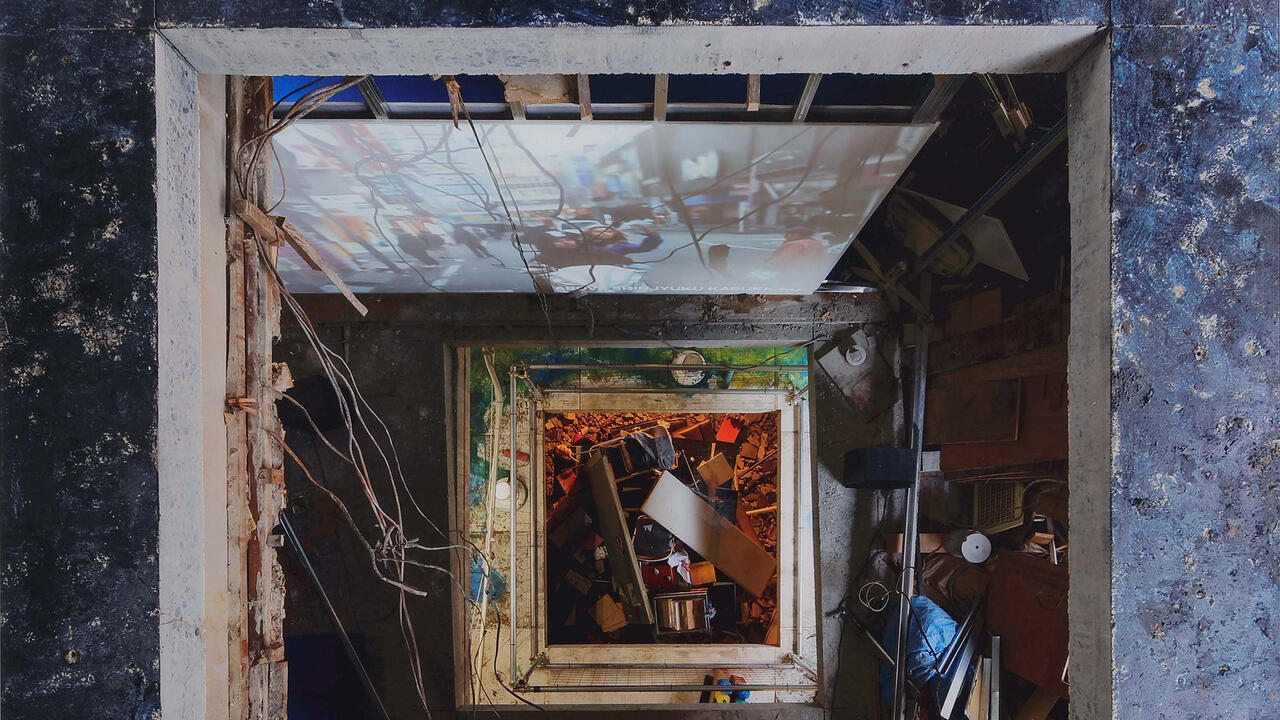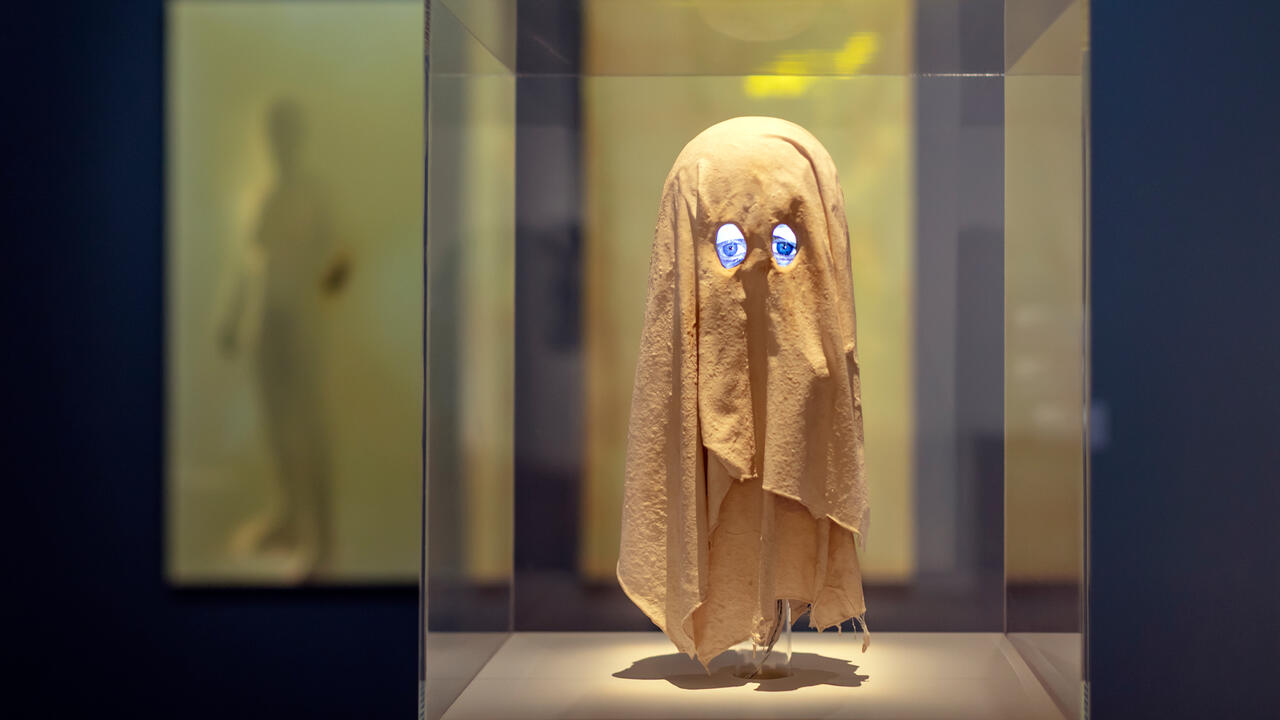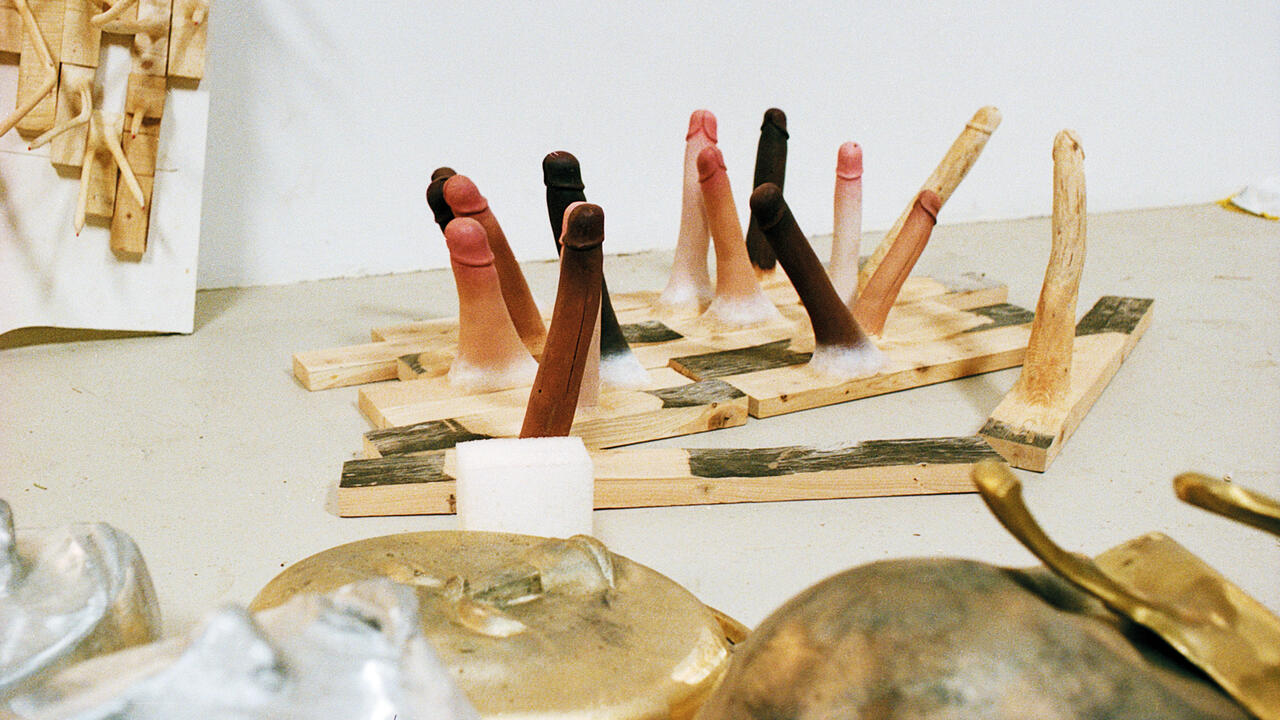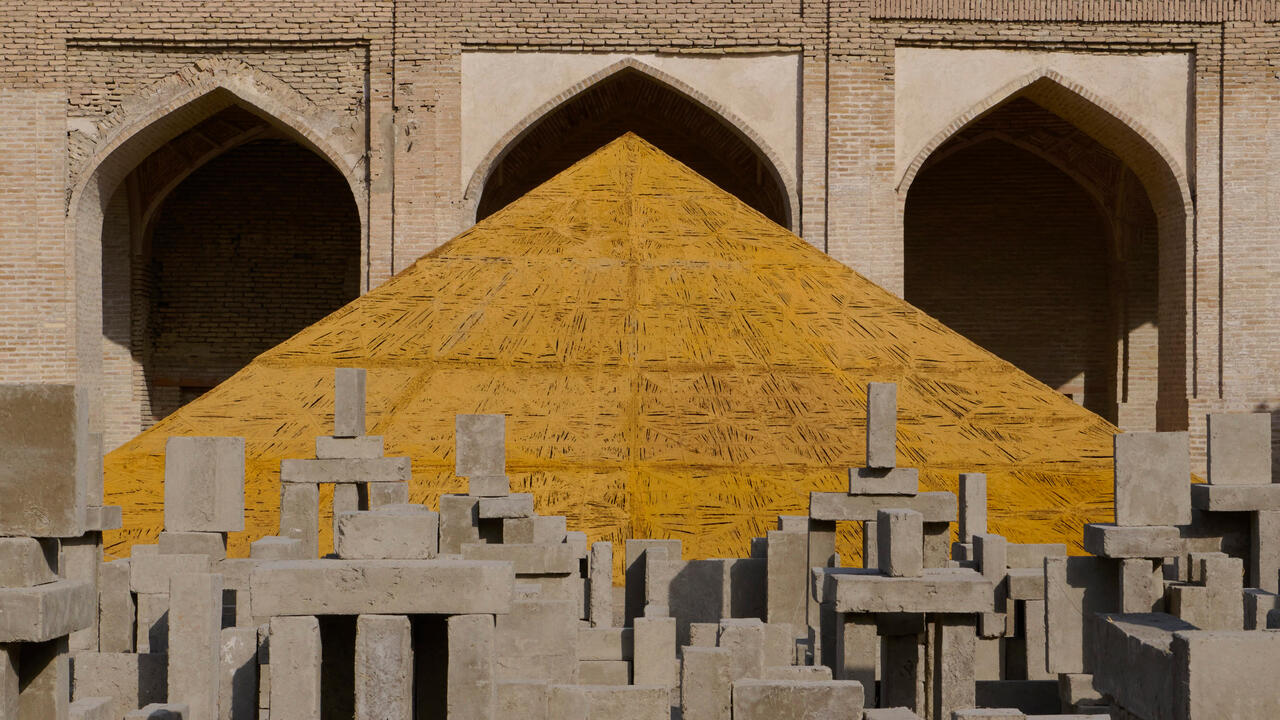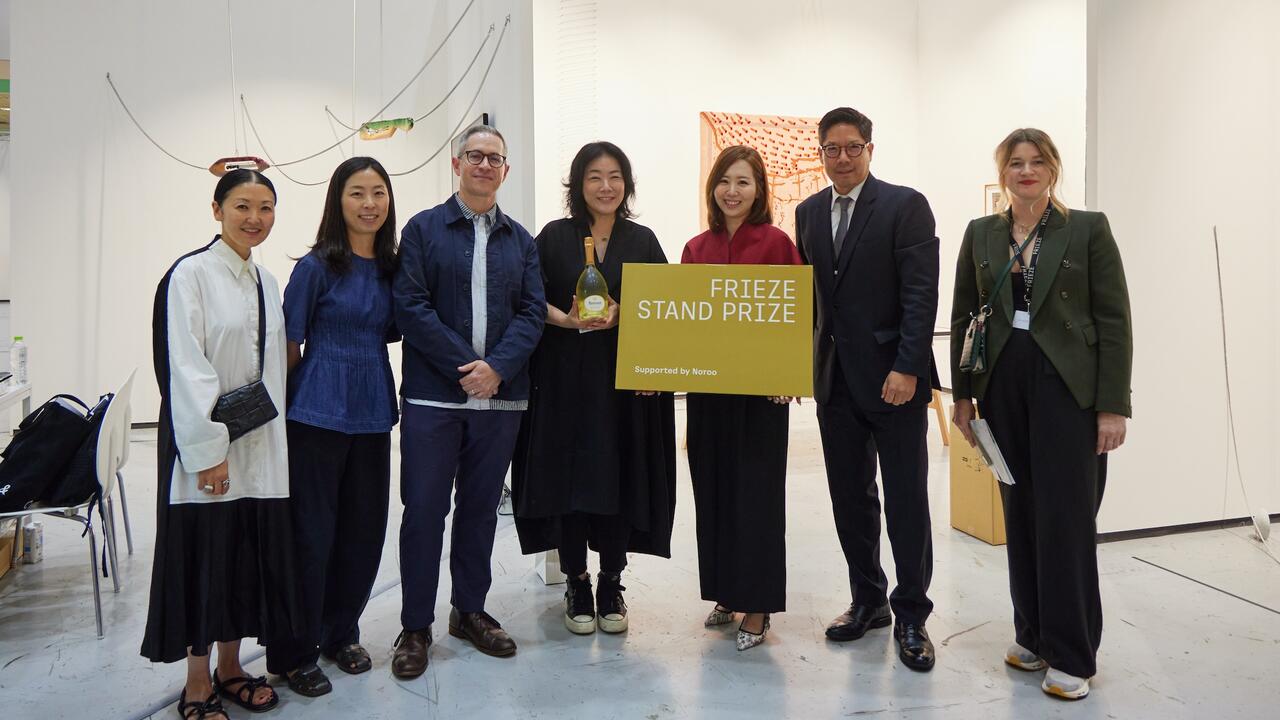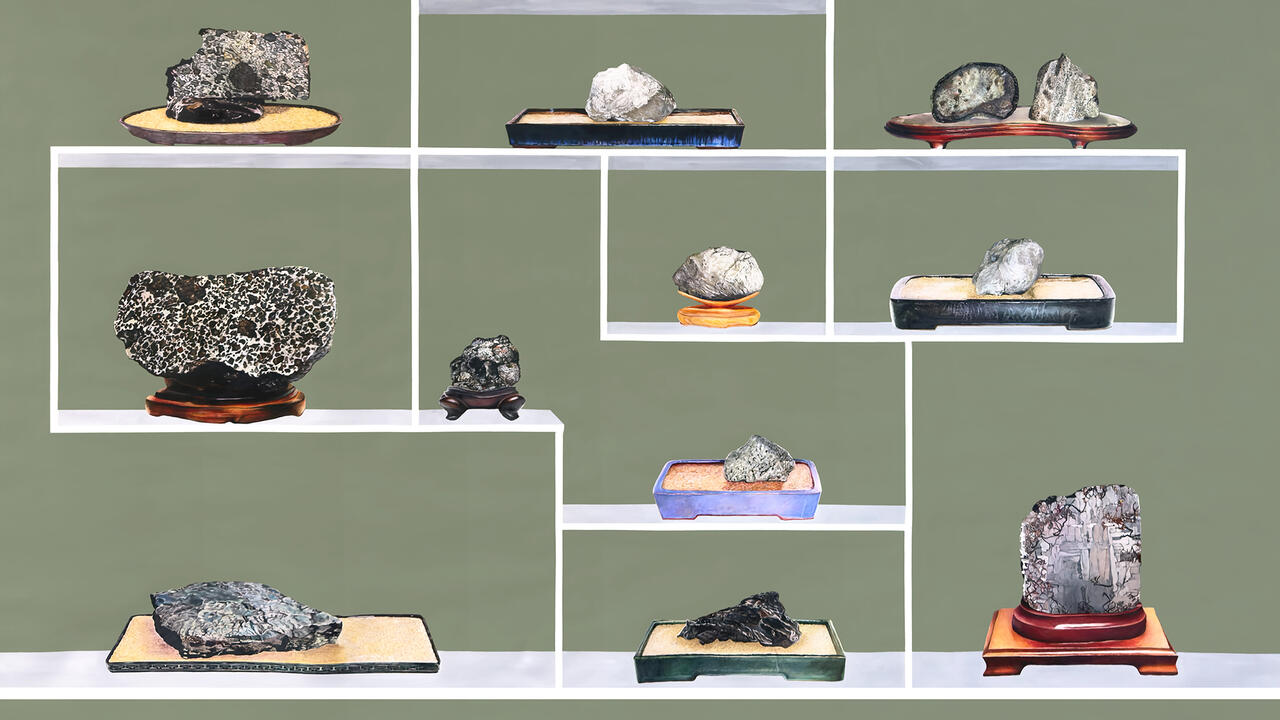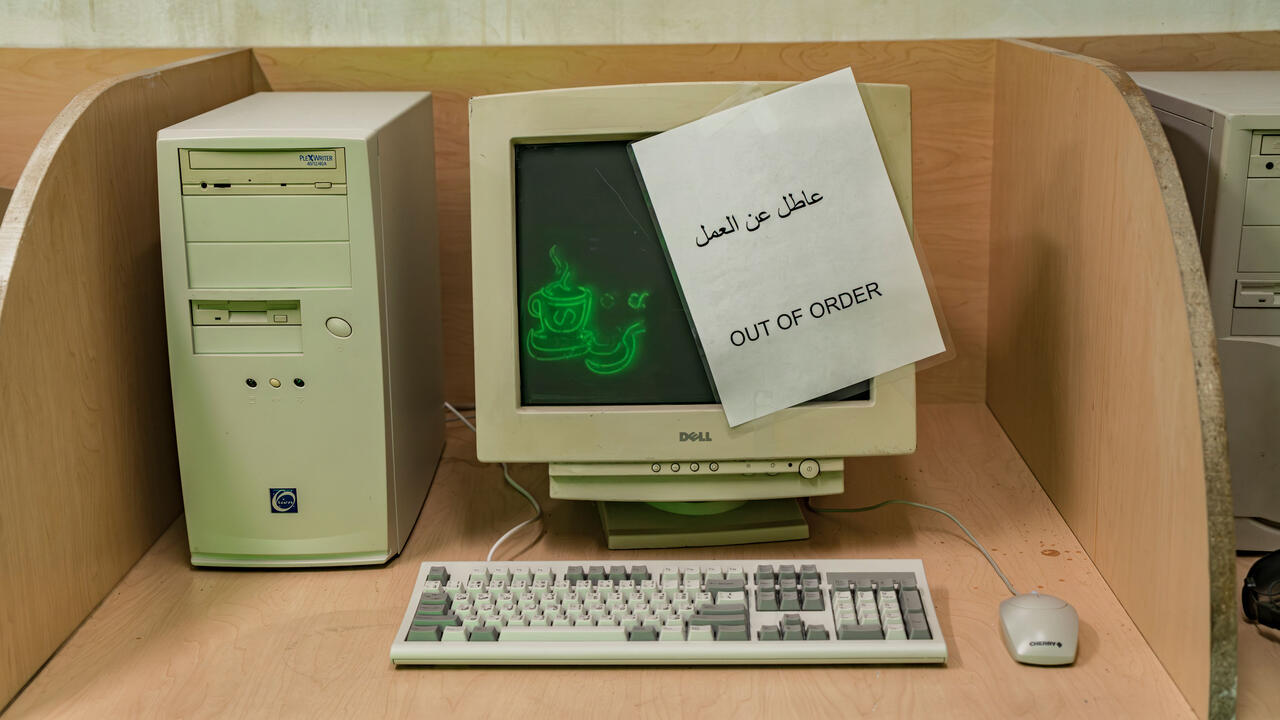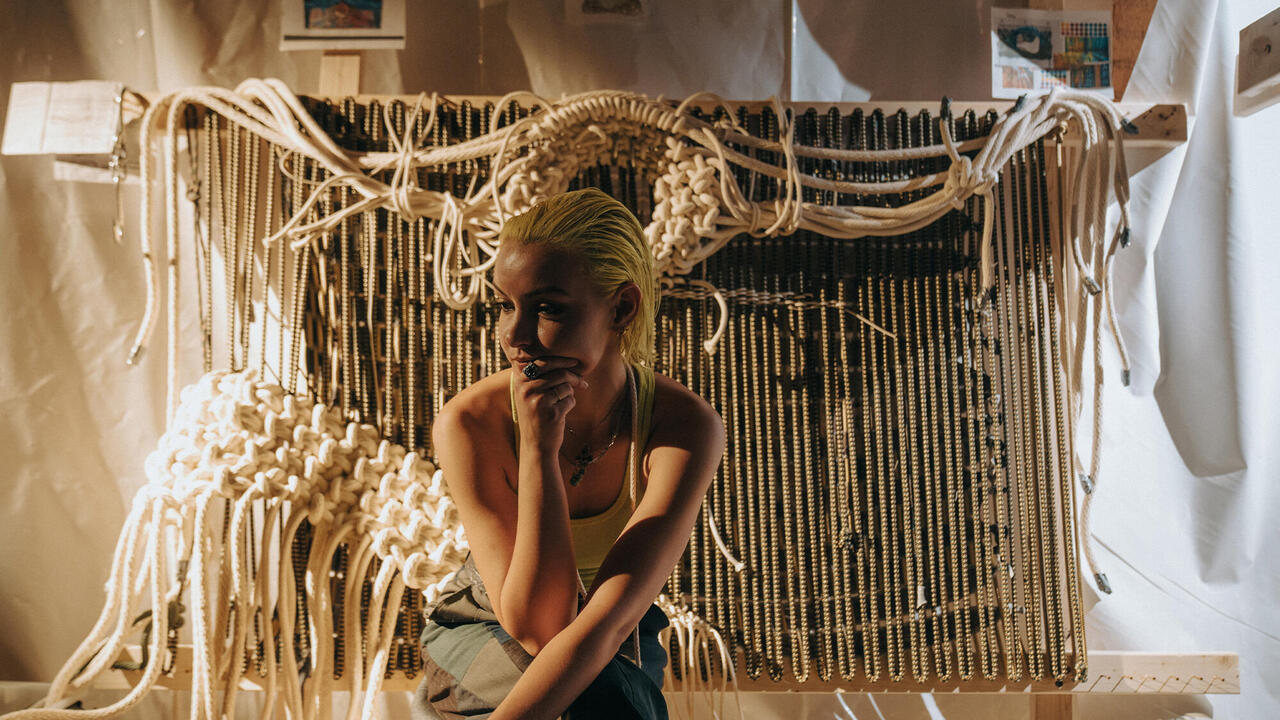The Best Shows in New York During Armory Week
From Vincent Fecteau’s killer cats to Aki Sasamoto’s barroom tricks, a selection of exhibitions not to miss
From Vincent Fecteau’s killer cats to Aki Sasamoto’s barroom tricks, a selection of exhibitions not to miss

‘Magic Ben Big Boy’
Matthew Marks Gallery
22 February – 20 April
The central gallery of this witty three-work, three-artist exhibition reassembles Vincent Fecteau’s first solo show, in 1995, at the late San Francisco gallery Kiki. ‘Ben’ took its name from Michael Jackson’s 1972 homage to his pet rat, and features well-worn shoeboxes cut with mouse-sized holes. Toilet paper roll tunnels connect some of these boxes to gallery walls as if to a vast rodent underworld. Around these quiet surface shelters rise columns of eerily unblinking cats, some of them photo-collaged with human eyes. The work makes you feel mousey, even as it pokes fun at our obsessive tendency to personify our pets. ‘The cats became advertisements not for their own indecipherable needs but for our neediness,’ Dennis Cooper wrote in a review of the original exhibition, published in Artforum. ‘They remained harmless and innocent even as our projections crystallized on their surfaces.’ Love a cat and it still might scratch you back.
The same could be said of Big Boy (1992), an oversized plush doll slumped in a corner of the back gallery, which Fecteau sewed and stuffed for artist Lutz Bacher. Tongue wagging as if in heat, Bacher’s boy might invite kiddie cuddles, were it not for his proportionately large genitalia. Like the teddy bears that tower over toddler cribs, Big Boy would keep on grinning even if we loved him to a nub – a hopeful, if somewhat discomfiting, projection of masculinity.
You must pass the first work in this show, Nayland Blake’s assemblage Magic (1990-1), when you leave it. A file box shrine, its votive figure is Madame, the puppet star of the 1980s sitcom Madame’s Place – a crowned and painted wooden queen with a mound of roses at her feet, which appear to have faded along with her beauty. Blake introduced Fecteau, his then-studio assistant, to Bacher, and serves as the puckish linchpin in this scene; perhaps it was his dark and pathos-laden use of dolls that inspired the other two’s humorous kitsch. Wherever the credit is owed, these works from 25 years ago feel as fresh as if they were made yesterday.

Siah Armajani
The Met Breuer and Public Art Fund
20 February – 29 September
This intriguing survey of work by Iranian-born artist, architect, mathematician and writer Siah Armajani first ran at the Walker Arts Center in Armajani’s adopted hometown of Minneapolis. There, his work Bridge Over Tree was constructed in 1970: a 28-metre trussed walkway with a stepped incline over a resilient fir. It was recently transported to Brooklyn Bridge Park – part of a concurrent exhibition organized by Public Art Fund – where, against the Lower Manhattan skyline, it strikes a note of defiant deference to nature. A maquette of the work is one of many curious architectural models on view at the Met Breuer, where studies of closets, stairways and dining tables recall the domestic nooks that Gaston Bachelard famously philosophized in The Poetics of Space (1958). Others are fantastical follies: the vertical picket fence in Persian Garden #1 (1983) would work only on a gravity-free lawn.
A restlessly inventive polymath, Armajani produced some of the first artworks with a computer in the 1960s. One program, set to print out integers between zero and one, resulted in a stack (on view here) that stands nearly three metres high. Another enabled him to design North Dakota Tower (1968), an erection that would cast a shadow across the width of the titular state.
Pack your eyeglasses: there’s much detail to consider here, from numerical equations to the lilting Farsi script Armajani used to cover early canvases and paper vestments. As a reprieve from dense conceptualism, there are also places to sit and rest: the Sacco and Venzetti Reading Room #3 (1993), a postmodern gazebo stocked with reading material curated by the artist collective Slavs and Tatars. The library’s focus on socialist political history obliquely acknowledges the work’s eponymous anarchists, who were executed by the US government in 1927. Its uncomfortable wooden chairs and metal finishes, meanwhile, remind us of architecture’s conflicting ability to haven as well as imprison.

‘Adelita Husni-Bey: Chiron’
New Museum
22 January – 14 April
Adelita Husni-Bey, who was included in the Italian Pavilion at the 2017 Venice Biennale, has become well-known for organizing pedagogical workshops around social issues and filming the frank discussions that ensue. The titular centrepiece of her small New Museum survey, ‘Chiron’, is also her newest – and perhaps strongest – work. It tracks a group of pro-bono lawyers working for UnLocal, an organization that provides counsel for undocumented immigrants in the US. In one poignant exchange, the lawyers acknowledge their obligation to follow the letter of unjust laws, for violating them would mean disbarment, and the loss of their ability to defend others. This raises an increasingly pressing question in the Trump era: do we amend the system from within or overthrow it? Few people struggle daily with this question as much as the lawyers who rescue kids from government cages. Few people could be so in need of group therapy. Husni-Bey’s subjects engage in exercises that resemble the warm-up routine of stage actors, humming and hawing under the calming wash of a blue klieg light, as if meditating on the eve of a battle.
Spliced in with this footage and dialogue are slow pans of an abandoned suburban street – clapboard houses with shabby siding and weed-strewn yards. Over time, these houses show their holes: each is just a façade propped up by wooden beams, hollow set pieces for the theatre of the American Dream. The implication is grim, but fair: the US criminal justice system is a house that provides no shelter in our current storm.

‘Aki Sasamoto: Past in a Future Tense’
Bortolami Gallery
1 March – 20 April
When Aki Sasamoto gave up drinking, she began spinning empty glasses on table-tops. What began as a nervous tic became a tender ritual which, like all the quotidian gestures in her performances, the artist inflected with fairytale whimsy. For ‘Past in a Future Tense’, Sasamoto has installed an oak bar in the small viewing room of Bortolami Gallery, equipped with empty whiskey tumblers under bell jars. These domes have been hooked up to large air ducts, which funnel air to the cups, and send them spinning. The cocktails seem disconsolate without their drinkers, impatiently awaiting their return. Sasamoto eventually started drinking again; but the glasses, like the world, have kept on spinning.

Sarah Charlesworth
Paula Cooper Gallery
23 February – 23 March
A rearing cowboy and Natalie Wood’s cleavage: could there be any image more quintessentially American than Sarah Charlesworth’s Rider (1983-4)? The sly and seductive photocollage conjoins the violence and sex at the heart of US culture with the graphic punch of a billboard ad. The luscious red Cibachrome with its matching frame is one of the smaller works in this knockout exhibition, Paula Cooper Gallery’s first with the artist, in which Charlesworth’s razor-sharp wit is on full display. See, for instance, Samurai (1981), in which a photograph of Tajomaru, warrior hero of Rashomon (1950), seems to have been sliced by his own blade. Tears are equally cutting in Stone Tablet and Explosion: shorn edges of ripped-up photographs, depicting runic carvings and an erupting volcano, respectively, enact scenes of Pompeiian destruction. Both images are part of Charlesworth’s rarely exhibited ‘In-Photography’ series (1981-2), an homage to Susan Sontag’s 1977 essay on the medium and a playful reference to the haptic power she saw in it. Our eye’s instinct to piece these jigsaw photographs together again mirrors our need to disassemble images in order to understand them. Charlesworth’s jokes are always dead serious.

Rubem Valentim
Mendes Wood DM
27 February – 26 March
This elegant, compact exhibition showcases eleven of the paintings and sculptures that self-taught Bahian artist Rubem Valentim made between 1960 and his death in 1991. The same symbols recur over three decades, in works on canvas and wooden panel reliefs: geometrically stylized orixás from the Candomblé and Umbanda religions of Brazil, practised by enslaved Africans and their descendants. Laden with meaning, the orixás can be read, like Chinese characters: circles, the eyes of Oxumaré and a sign of celestial communication, become slave chains when joined together with a narrow band. Rectangles with dimpled sides stand for Xangó, the supreme judge, god of lightning and fire; a jagged edge, the threat of colonial violence. The many cruciforms in white and yellow derive from Angolan and Congolese traditions, but doubly serve as Christian crosses, and refer to the religion of the colonizers.
The gallery has published a pamphlet with a helpful key to Valentim’s codex, and the artist’s 1976 manifesto, translated from Portuguese. ‘A universal language, but of Brazilian character with elements from different, complex and creative artistic tendencies,’ he writes. ‘Favorable to an intensive cultural exchange between all people and nations in the world.’
When Valentim began painting in the early ‘60s, Brazil was in the throes of tropical modernism. Hélio Oiticica and Lygia Clark’s geometric abstractions were embraced by a bourgeoisie with European art historical education. Valentim’s universalist vision was distinct from his white contemporaries: as a black artist in the poor northeast, he was largely neglected during his lifetime. His modern synthesis of bold colour palettes and refined geometries with an ancient language of the African diaspora is therefore singular for its political charge. In a country that represses its racial history, it might be the grammar of revolution.

‘Judith Linhares: Hearts on Fire’
PPOW
14 February – 16 March
Judith Linhares’s paintings pierce the sopping early March cold like the rays of golden sunshine they often feature. Perhaps that’s why many associate the artist with California, though she’s been based in New York for nearly 40 years. The bright purples, pink and marigolds of her canvases are colours that don’t exist in Manhattan, or possibly anywhere else on this planet. Slightly alien, too, are the distended bodies of her figures, exclusively female and nude. With Linhares’s goggles on, art history becomes an LSD fever dream: High Desert (2018) reprises Henri Rousseau’s The Sleeping Gypsy (1897) with a purple odalisque on a floral quilt. Dawn (2017) might reference John Collier’s Lady Godiva (1898), but its lime rider astride on a donkey looks unembarrassed, the sky behind her striped like another luscious textile.
Linhares’s signature technique, achieved with wide bands of alternating colour, lends her paintings a flatness that is paradoxically scintillating. The ground always feels a bit unstable, rocky perches precariously pitched. Her women, though, never lose their balance: see the contented figure seated on a quilted mount in Down by the River (2018), or her compatriot, who gnaws on a drumstick with gusto. In the show’s strongest work, Out of the Woods (2018), a woman pulls her middle-parted flaxen hair in two directions, seemingly less out of frustration than as counterbalance. With one knee bent, and her other dimpled foot extended, she steps forward with a tightrope-walker’s care. The earth may quake, but we can be sure she will not fall.
Main Image: Vincent Fecteau, Chorus #1 (detail), 1994, collage. Courtesy: © Vincent Fecteau and Matthew Marks Gallery, New York









